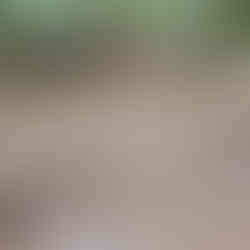History of Mt Kurama
- Amanda Jayne

- May 21, 2022
- 4 min read
by Amanda Jayne and Rika Tanaka
For most of us, when we hear the name Mt Kurama, we tend to associate it with Reiki. In Japan however, mention of the mountain brings other thoughts to mind.
Ushiwakamaru and Tengu
The most famous person associated with this lush, forest-covered mountain is the samurai Minamoto no Yoshitsune. Known as Ushiwakamaru as a child, he was placed in the care of the monastery on Kurama. Here he is said to have snuck away and been trained in the martial arts by the Tengu. Who or what are Tengu? They are the other thing Japanese people associate with Mt Kurama. Spirits or guardians of the mountain depicted as having a red face and long nose. There is a large statue of a Tengu just outside the train station at Kurama that must be one of the most photographed objects in the town. Minamoto no Yoshitsune was not taught by any old Tengu, but the king of the Tengu, Sōjōbō, which is what Kurama Tengu are known as. Exceedingly powerful and according to one legend, said to have the strength of 1,000 usual Tengu.
Naturally, Minamoto no Yoshitsune became an incredible warrior and after leaving the protection of the monks on Kurama fought in many wars, became a general and eventually suffered the fate of so many samurai; having upset his powerful and jealous brother, he was betrayed by the son of a friend and protector. His residence was surrounded and he was defeated and forced to commit seppuku.
Today this popular warrior can be found in various famous literary stories in Japan, hence, when people think of Mount Kurama, they most often think of Minatomo no Yoshitsune and the many Tengu, powerful, mischievous spirits who guard the area.
Religious sects on the Mountain
In Reiki, we tend to think Mount Kurama must be famous for Reiki because it was the place Mikao Usui first discovered that this wonderful mysterious energy could be used by us to improve body and mind, supporting us physically and spiritually. Many people associate Reiki and some symbols, with the Sonten, the three deities worshipped there that represent Power, Light and Love. However, history tells us that they became a trinity long after Usui sensei had experienced Anjin Ryumei there.
8th century
The first of these deities to be enshrined and worshipped on the mountain was Bishamonten. In 770 a monk named Gantei (sometimes written as Kantei/Gancho) founded the temple there and there are various accounts of how this came about. One story tells of Gantei dreaming of being guided to a sacred spot by a white horse and subsequently setting out to find it. On his way, a white horse appeared that guided him to Kurama. He was attacked by an ogre at the entrance, but a tree fell at just the right moment killing the ogre outright. In the morning, Gantei saw a statue of Bishamonten, one of the four heavenly kings, god of wealth and protector of the north, there and built a temple to enshrine him.
Twenty-six years later a man named Fujiwara no Isendo, said to have also had a dream about following a white horse, was led to Mt Kurama. He re-established the temple there, modifying it to enshrine both Bishamonten and the deity he workshipped, Senju Kannon, the goddess of Mercy and Compassion. He named the temple buildings Kuramadera, after the name of the mountain.
9th century
Kuramadera became Shingon sect at the end of the 9th century. Shingon is Japanese esoteric Buddhism and the word shingon means mantra.
12th century
Kurama changed to Tendai Buddhism in this century. Tendai is another esoteric form of Buddhism, holding the Lotus sutra as its fundamental scripture.
Post-war Japan
After the Pacific war a new Buddhist religion was founded here, known as Kurama Koukyo and the temple complex officially left the Tendai sect behind in 1949. The religion combines aspects of Shinto concepts with Buddhism and it was at this time that the third deity, Goho Maoson was enshrined here. This deity is said to have appeared from Venus 6.5 million years ago and bears a strong resemblance to the appearance of the mountain Tengu - a big nose, long beard and wings. Some now think that the Tengu on Mt Kurama were originally Goho Maoson. It was decided by the new religion, Kurama Koukyo, that the three deities would be worshipped as Sonten, a trinity.
Bishamonten is said to represent the Sun and Light
Senju Kannon is said to represent the Moon and Love
Goho Maoson is said to represent the Earth and Power
Bishamonten embodies the element of fire
Senju Kannon embodies the element of water
Goho Maoson embodies the element of earth
Together they create beautiful energy. There is a prayer encompassing their qualities:
Warm as the sun
Beautiful as the moon
Powerful as the earth
Sonten in everything
They may not be directly connected to the founding of Usui’s Reiki treatment method, but they are definitely a powerful representation of the wonders of elements, life and the essence of Reiki.


















Comentários